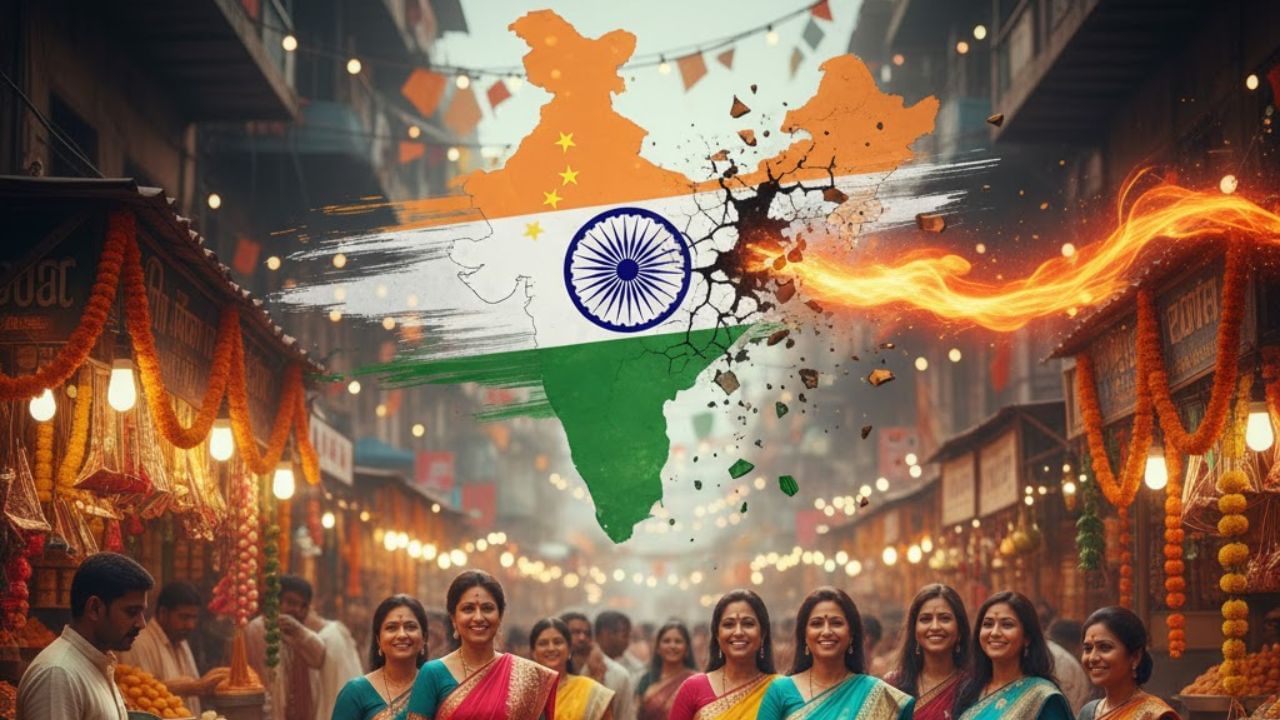‘Big bang’ of Diwali!
This year’s Diwali was not limited to just lights and sweets, but it has proved to be a historic turning point for the Indian economy. The country’s markets have destroyed all previous sales records. A detailed report by the Confederation of All India Traders (CAT) has revealed that India has done a record business of ₹6.05 lakh crore this festive season. This figure is so big that it has become the biggest festive sale ever in the business history of the country. This unprecedented success has not only breathed new life into the markets, but is also a resounding victory for the spirit of ‘Self-reliant India’.
The survey, conducted by CAT’s research arm, covered 60 major cities across the country, including all state capitals as well as tier-2 and tier-3 cities. The picture presented by this report shows how strongly India’s traditional retail market is making a comeback.
87% Indians said ‘no’ to Chinese goods
The biggest force behind this record-breaking sale has been the spirit of ‘Swadeshi’. According to National General Secretary of CAT, Shri Praveen Khandelwal, Prime Minister Shri Narendra Modi’s call for ‘Vocal for Local’ and ‘Swadeshi Diwali’ inspired both traders and customers in an unprecedented manner.
According to the report, the Prime Minister emerged as a “strong brand ambassador” of this campaign. His appeal had such a deep impact on the public that 87% of the consumers surveyed preferred to buy Indian goods rather than foreign, especially Chinese, products. The direct result of this was that there was a sharp decline in the demand for Chinese products. Traders themselves said that there was a direct jump of 25% in the sales of Indian manufactured goods as compared to last year. This change is not just an economic statistic, but it reflects a clear wave of nationalism and indigenous pride that changed the direction of the market.
Great comeback of small traders
The most interesting and important aspect of this Diwali sales is that about 85% of this huge business of ₹6.05 lakh crore has been from non-corporates i.e. our traditional markets and small traders. This figure shows the true strength and deep roots of the Indian retail market.
This is proof that despite big e-commerce platforms and malls, the common businessman of India is still the backbone of the economy. Last year, a total business of ₹ 4.25 lakh crore was done on Diwali, compared to which a tremendous growth of 25% has been recorded this year. This surge is a big relief and a sign of great comeback for those small traders who were facing many challenges for some time. This sale has proved that the real markets of India do not reside in the malls of metropolitan cities, but in markets like Chandni Chowk.
| Category | Sales Percentage (%) |
| Grocery & FMCG | 12% |
| gold and jewelery | 10% |
| Electronics & Electricals | 8% |
| consumer durables | 7% |
| Gift Items | 7% |
| readymade garments | 7% |
| sweets and snacks | 5% |
| Home Decor | 5% |
| Furnishing and Furniture | 5% |
| Clothing and Fabrics | 4% |
| Bakery and Confectionery | 3% |
| puja material | 3% |
| fruits and dry fruits | 3% |
| Footwear | 2% |
| other miscellaneous items | 19% |
From grocery to gold and silver, everything created history
This bumper sale was not limited to any one sector. CAT National President Shri B.C. Bharatiya said that there was massive purchasing in almost every area. As usual, the largest share in the total merchandise trade (which stood at ₹ 5.40 lakh crore) was of grocery and FMCG (12%). This was followed by gold and silver (10%), which is considered a symbol of prosperity during festivals.
Apart from these, there was also strong buying in sectors like electronics & electricals (8%), readymade garments (7%), gift items (7%), and home decor (5%). From sweets, snacks, puja materials to furniture and footwear, demand was strong everywhere.
Not only this, this time the service sector also did wonders. For the first time, a record trade of ₹65,000 crore was recorded in the services sector. During Diwali, unprecedented growth was seen in works like packaging, hospitality (hotels and restaurants), taxi services, travel, event management and decoration. This shows that the scope of the festive economy is no longer limited to just purchasing goods, but the consumption of services is also increasing rapidly.
50 lakh new jobs found in Diwali
A major reason behind this record sale is the rationalization of GST rates. 72% of the traders surveyed admitted that due to the reduction in GST rates, they were able to give better prices to customers, which increased sales. Consumers also expressed satisfaction over the stability in prices.
This enthusiasm is not just temporary. According to the report, the confidence of traders (Trader Confidence Index) is at the level of 8.6/10 and the confidence of consumers (Consumer Confidence Index) is at the level of 8.4/10, which is the highest in the last decade. This rising confidence shows that people are confident about the national economy amid controlled inflation and rising incomes.
This festive season has also given great news on the employment front. This non-corporate sector, comprising 9 crore small traders, created 50 lakh temporary jobs during Diwali. Importantly, 28% contribution to total trade came from rural and semi-urban areas, which shows that economic strength is no longer limited to metros.
Based on this report, CAT has also given many suggestions to the government like GST simplification, easy credit and creating logistics hubs in Tier 2/3 cities. Shri Khandelwal said that this Diwali has been a festival of prosperity and economic confidence. Experts believe that this boom will continue in the coming winter and wedding seasons also.
